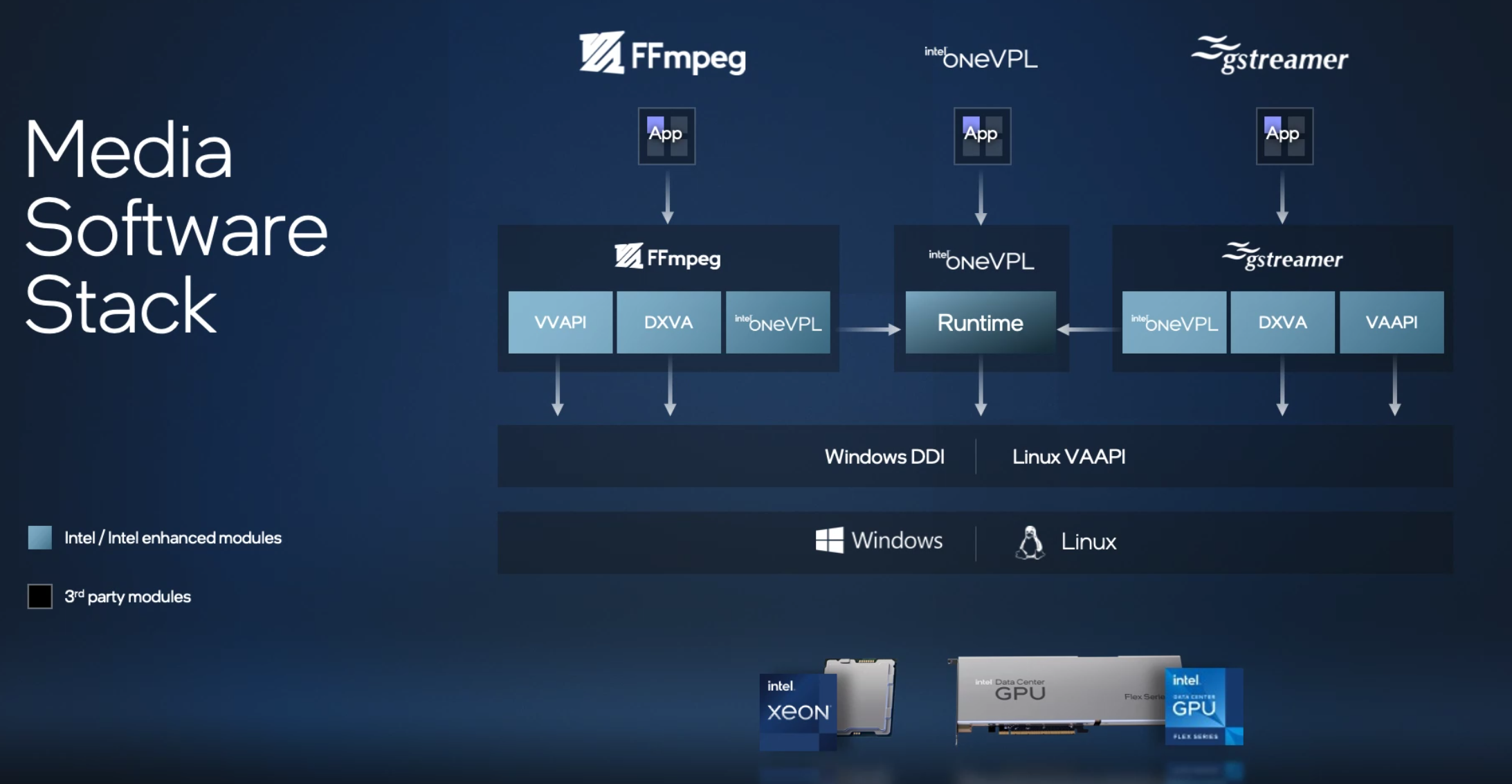The 170 and 140 are the first in the series—wunderbar.

A few weeks ago, Intel rebranded the Artic Sound-M data center GPU as the Flex series. The first products introduced are the Flex Series 170 and 140—how wonderful is that? The name change was made almost the same time Intel launched its new slogan campaign: How Wonderful Is That?

The Flex 170 and 140 compare as shown in the following table.
GPU specifications
| Flex 170 | Flex 140 | Difference | |
| Execution Units | 512 | 256 | 200% |
| Xe cores | 32 | 16 | 200% |
| Render Slices | 8 | 4 | 200% |
| Ray-Tracing Units | 32 | 16 | 200% |
| Intel Xe Matrix Extensions (Intel XMX) Engines | 512 | 256 | 200% |
| Graphics Max Dynamic Clock (MHz) | 2,050 | 1,950 | 105% |
| Graphics Base Clock (MHz) | 1,950 | 1,600 | 122% |
| TBP (W) | 150 | 75 | 200% |
| TDP (W) | 150 | 75 | 200% |
| PCI Express Configurations | Gen 4 ×16 | Gen 4 ×8 | 200% |
| Memory Size (Gb) | 16 | 12 | 133% |
| Memory Type | GDDR6 | GDDR6 | |
| Graphics Memory Interface (Bits) | 256 | 192 | 133% |
| Graphics Memory Bandwidth (Gb/s) | 576 | 336 | 171% |
| Ray Tracing | Yes | Yes | |
| H.264 Hardware Encode/Decode | Yes | Yes | |
| H.265 (HEVC) Hardware Encode/Decode | Yes | Yes | |
| AV1 Encode/Decode | Yes | Yes | |
| VP9 Bitstream & Decoding | Yes | Yes |
Intel Flex 170 and 140 specifications. (Source: Intel)
Intel was the first to announce the inclusion of an AV1 codec, but Nvidia beat them on being the first to ship one. Nonetheless, AV1 is a significant improvement in streaming capability. Combined with Intel’s award-winning transcoder engine, the Flex series (assuming the price is right) offers a real opportunity to broadcasters and game streamers.
Intel claims it:
- Delivers 5× media transcode throughput and two times decode throughput at half the power (Intel Flex Series 140 GPU compared to Nvidia A10).
- Delivers up to 36 streams 1080p60 transcode throughput per card.
- Delivers eight streams with 4K60 transcode throughput per card.
- When scaled to 10 cards in a 4U server configuration, it can support up to 360 streams of HEVC/HEVC 1080p60 transcode throughput.
The company says the Flex series GPU’s hardware-based, open-source AV1 encoder delivers more than 30% bandwidth savings. The Flex series GPU’s media engine also supports and improves performance for a broad range of industry codecs, including HEVC, AVC, and VP9.

Furthermore, Intel claims that leveraging its Deep Link Hyper Encode feature in its Flex series 140 with two devices on one AIB can meet the industry’s 1-second delay requirement while providing 8K60 real-time transcode. This capability is available for AV1 and HEVC HDR formats.
Intel says a single Flex series 170 GPU can achieve up to 68 streams of 720p30, while a single Flex Series 140 GPU can achieve up to 46 streams of 720p30 (measured on select game titles).





